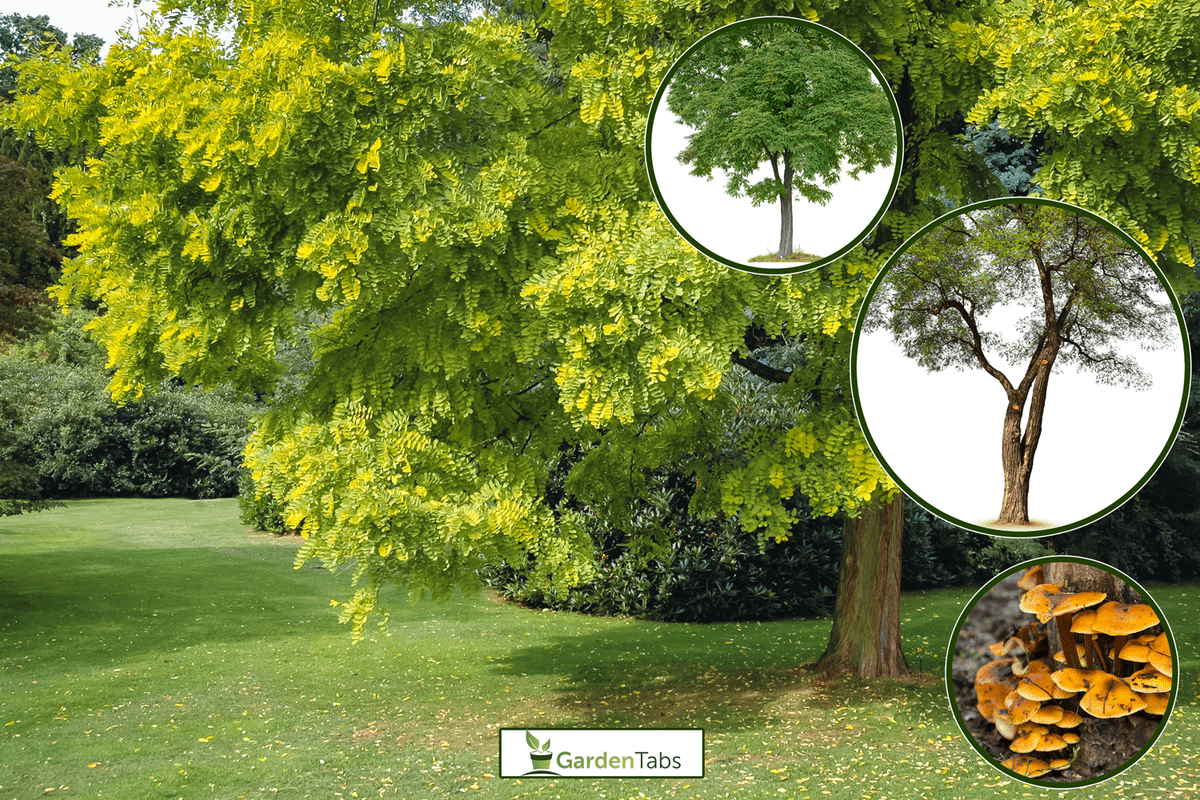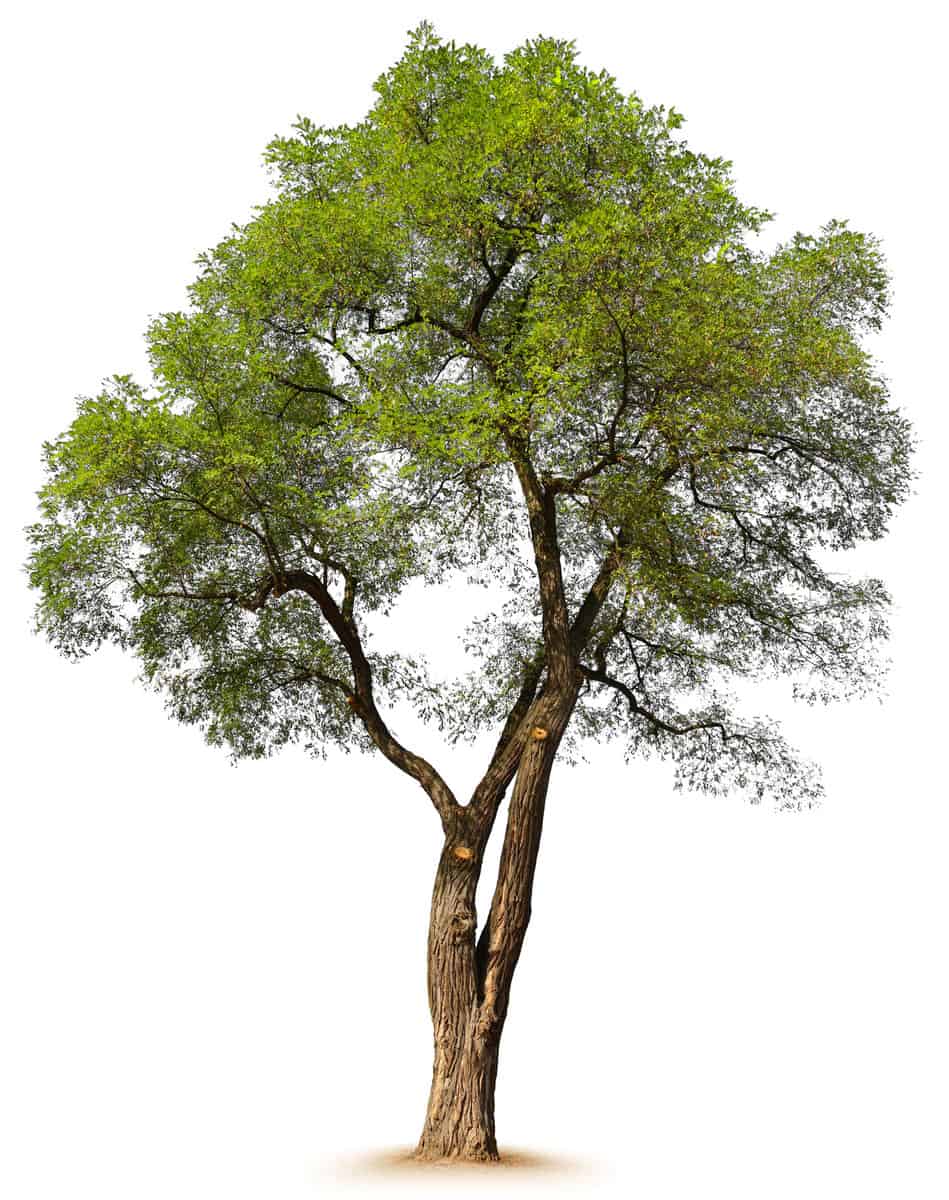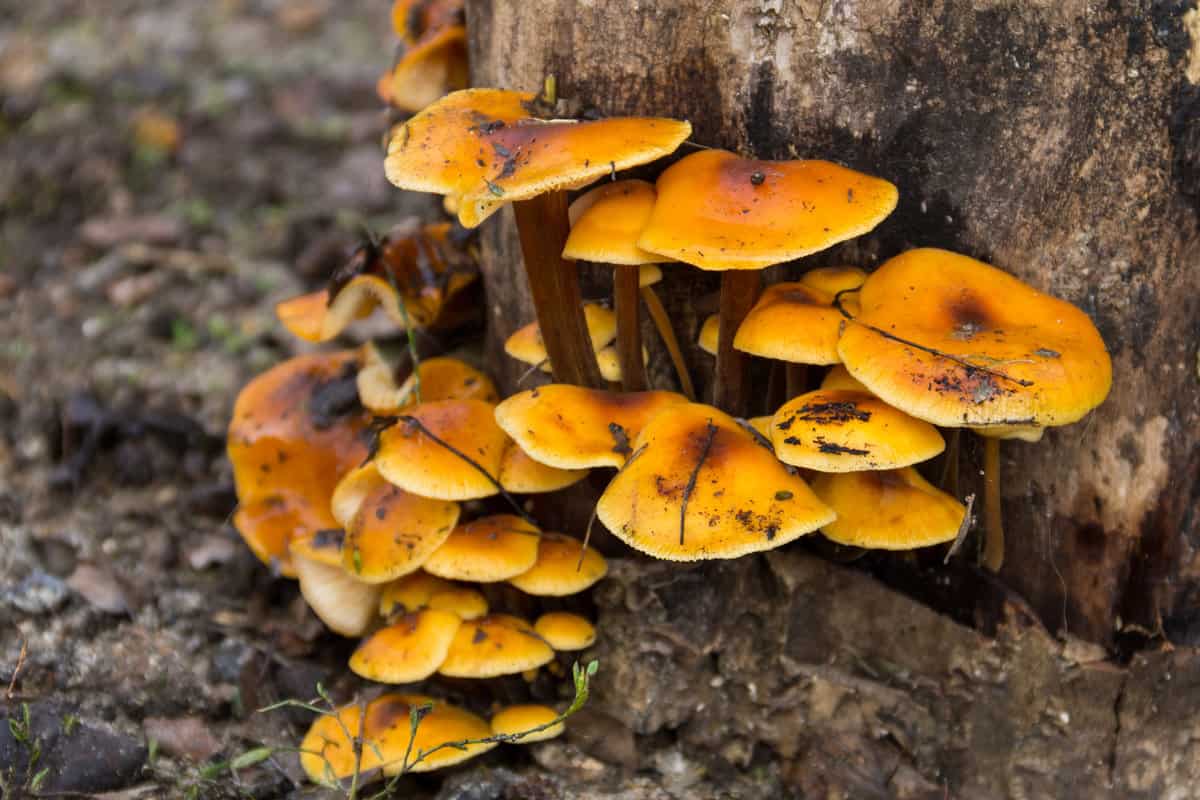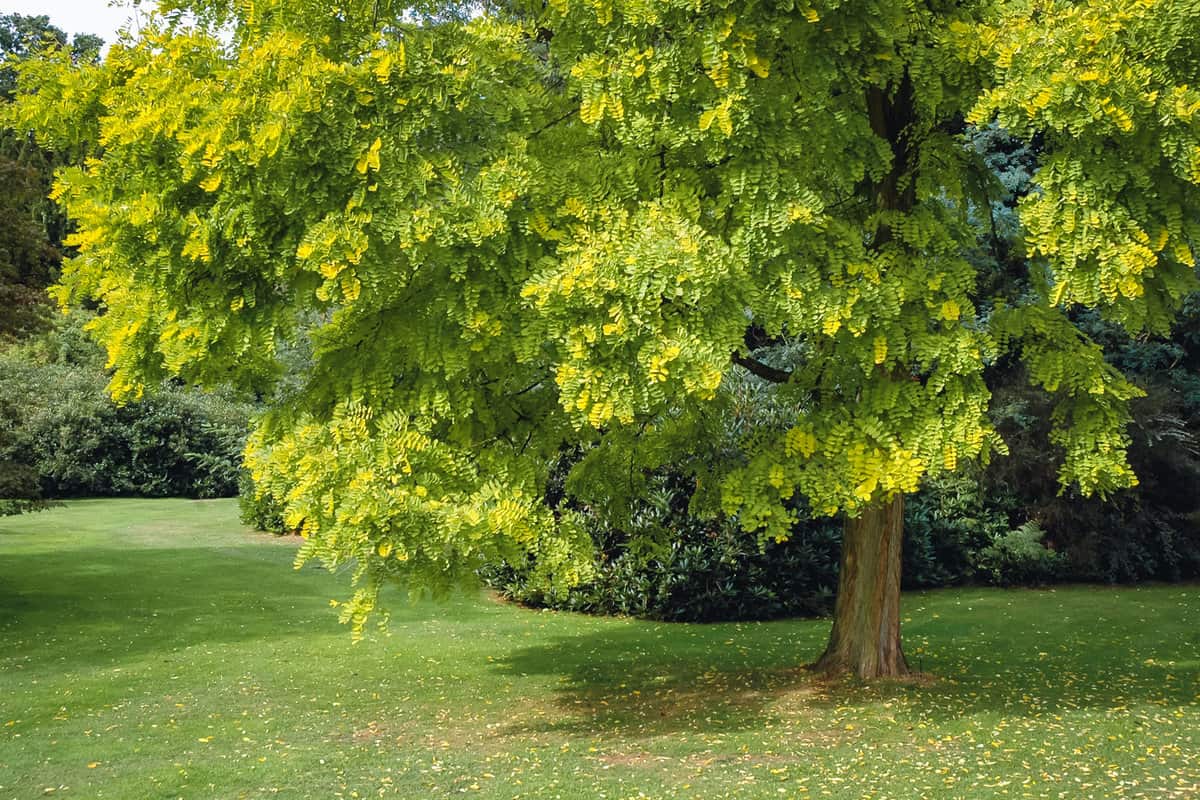Mop Tops are popular for gardens and landscapes due to their lush, attractive foliage. As with most plants, they may be affected and suffer from plant diseases and environmental factors that alter their nutritional needs. We researched pertinent information regarding your tree for your convenience.
A dying Mop Top is a cause for concern simply because this tree is robust and can thrive in various growing conditions. The possible causes are fungi which lead to root rot disease and nutrient deficiency.
Mop Tops and other Robinia species are hardy trees that are not usually susceptible to infestation, plant disease, and other environmental factors. In some cases, they may be weakened by fungi and, unable to recover, eventually die. This post will help you identify the early signs of infection, the possible causes, and ways to revive your tree.

Mop Top Tree: An Overview

A Mop Top is a grafted tree composed of two Robinia species - a rare dwarf form of Common Locust (Robinia Umbraculifera) is attached to a Black Locust Tree (Robinia Pseudoacacia). The latter is considered an environmental problem. Grafting is essential in controlling the invasive nature of the Black Locust.
Robinia is commonly planted in gardens due to its lush light blue-green foliage and fragrant, attractive white flowers that generally attract bees. The grafted variety has full circular foliage and can grow 3 to 5 meters tall. It is an excellent landscaping feature usually used as a focal point in different garden designs.
The tree is adaptable to various growing conditions and is considered a nitrogen-fixer. It converts nitrogen from the air into nitrates or ammonia and stores this gas through its root nodules.
This cycle helps improve soil properties. Nitrogen is an essential element in the growth and development of plants and trees.
Studies have shown that Mop Tops can be placed and planted in contaminated soils since they can fix their overall properties.
Possible Causes Why The Mop Top Tree Is Dying
We list below the possible causes that may lead to the death of the Mop Top tree:
Leaf-Spot Fungus
Prolonged wet weather leads to soil saturation that encourages the growth and proliferation of fungi. Phloeospora Robinae, a leaf-spot fungus, is among the most prevalent organisms during the rainy season. They damage trees by killing cells and causing plant stress.
Initially, brown spots appear on the leaves and spread over time, causing deformities and tears at the edges. Soon after, the rest of the foliage may become affected, and the rest of the leaves fall prematurely.
The infestation itself does not threaten the life of your Mop Top, but if unchecked, prolonged exposure can weaken the tree and lower its resistance.
Remove the affected leaves and trim off the branches where the disease is most observable. Pruning the tips or edges of totally defoliated branches will stimulate new leaf growth. Discard the removed portions properly by burying or burning them away from the yard or garden.
If the condition recurs, consider fungicide application. It would be advisable to treat the unaffected trees and other plants as well before the development of the disease.
Honey Fungus

Armillaria ostoyae is a fungus (mushroom) species that grows and spreads mostly underground. It is considered the most serious fungal plant disease.
They favor moist or wet ground conditions and rapidly proliferate around the tree's root system. The honey fungus has been dubbed "the tree killer" since it attacks the roots and causes the tree to die.
They appear as honey-colored toadstools at the base of your tree. But since they primarily develop below the soil and appear only when the disease is advanced, identification and diagnosis are often critically delayed.
Usually, the infected tree exhibits poor foliage growth, drooping, and a general lack of vigor. The condition may escalate rapidly, and tree death could relatively be sudden.
Unfortunately, no chemical can control the fungus without causing considerable damage to the tree itself. All parts of the infected Mop Top must be removed, including the stump and roots.
The affected area has to be excavated to eliminate all growth and allow enough aeration to circulate and sunlight to penetrate.
Phytophthora Root Rot
Root rot, which primarily results from prolonged soil saturation, may be aggravated by a fungal disease caused by Phytophthora sojae. The pathogen destroys the root system by feeding on its cells and preventing the uptake of water and minerals.
The fungi cause a slow decline of the tree, initially manifested as yellowing and premature falling of the foliage. Your Mop Top will grow poorly due to the gradual depletion of available nutrients, decline over time and eventually die.
The symptoms are not as pronounced or observable as other fungal infections, and the tree is usually critically affected before exhibiting signs of deterioration.
Adequate soil drainage is the most fundamental way to avoid fungal infestation. Fungicides are effective against the particular strain and are best applied before the wet season.
Nutrient Deficiency
Extreme conditions like highly acidic or alkaline soil, drought or waterlogging, and hot and cold weather put undue stress on plants which may inhibit their capacity for nutrient uptake. Early signs include leaf discoloration and poor flower and fruit production.
Stunted or slow growth becomes observable when the deficiency and the unfavorable conditions remain unresolved. Symptoms, causes, and remedies are listed in the following text regarding the most important nutrients.
Nitrogen
Nitrogen is responsible for green leafy growth, and young, developing plants require adequate amounts for photosynthesis and structural material. Since it is highly soluble, rainy weather tends to dissolve and wash away the element leaving the soil deficient after the wet season.
Yellowing of leaves and stunted growth are the most common symptoms of nitrogen deficiency.
Mulching with organic matter such as compost, animal dung, or a combination would provide a constant and stable level of nitrogen necessary to sustain the tree. Applying fertilizers would address and remedy the situation quickly and more instantly.
Potassium
Potassium is vital in water uptake and promotes fruit and flower production. Yellow or brown discoloration may appear on the leaves' rims or edges, and the trunk may not develop density or hardness. Flowers and fruits may be stunted and scarce.
High potassium fertilizers such as potash would replenish the soil and improve the growth and development of your Mop Top.
Phosphorus
Phosphorus is essential for root formation and shoots growth. They are generally abundant in most soil types but may be depleted in areas with high rainfall and heavy clay ground.
Dull yellowing leaves, brown spots, and slow development of your tree are symptoms of phosphorus deficiency.
Apply fertilizers with complete and equal proportions of nitrogen, potassium, and phosphorus.
Nutrient deficiencies do not endanger the life of your Mop Top. However, if the lack of essential elements is not addressed and remedied, the tree may weaken and be susceptible to plant parasites and diseases.
Care And Maintenance Of The Mop Top Tree

Soil
Mop Tops are not high-maintenance trees and are quite easy to care for, especially because they can thrive in almost all growing conditions. They adapt easily and can grow in various soils if they drain properly.
The ground's pH level would not affect and hinder development. It has been proven that they can thrive in both acidic and alkaline soils. While this is true, it is best to plant them in sandy loam soil because it allows for good drainage.
Water
You will have to water your Mop Top often enough to keep the soil moist, particularly during the first growing season. In its second or third year, hydrate or moisten the tree when there have been no rainfalls for at least a month.
Established and mature trees tolerate drought but should still be watered during long dry spells. Avoid overwatering since they are highly sensitive to permanently wet environments.
Light
Mop Tops generally require full sunlight exposure, at least 6 hours a day, and are fairly intolerant of shade. Make sure to plant your tree where it can get its needed light requirements.
Fertilizer
Mop Tops need not be fertilized with nitrogen since they can convert this element into nitrate or ammonia, which is beneficial in its growth and development.
Pruning
It is best to prune your tree in winter after the shedding or falling of the leaves. This will simplify the task because you can easily see what you are working with. Cut all dead and ailing branches, then cut two-thirds of the remaining mature shoots. Afterward, begin with shaping the tree.
Take note that pruning can stimulate the growth of suckers. Suckers are offshoots that grow upwards from the roots meters apart from your Mop Top and need to be removed immediately.
Are Robinia Roots Invasive?

Robinia has a shallow and wide-spreading root system known to be quite invasive. Ideally, the tree should be at a distance of 20 feet from your house, because there are cases where the bases and foundations of homes are destroyed.
Apart from this, the tree itself is prone to suckering. They can grow up to about 18 yards away from the footing of the original tree and are considered troublesome in small gardens. If the shoots appear near your home's foundation, immediately remove them while they are still young.
In Closing
Mop Tops may be robust and adaptive to various conditions. However, they are prone to fungal diseases that may lead to the tree's eventual death.
We hope this post proved insightful in saving your Mop Top tree from deteriorating. We have other posts that may interest you:
